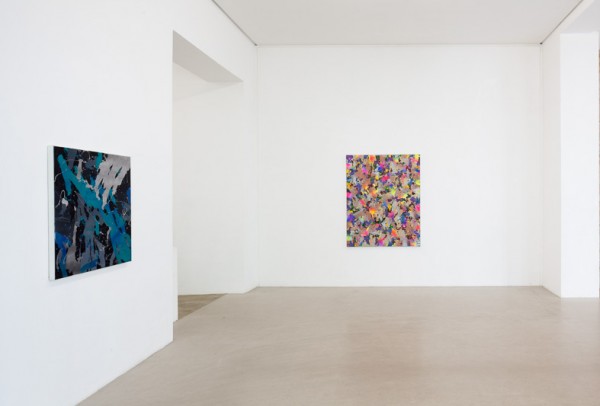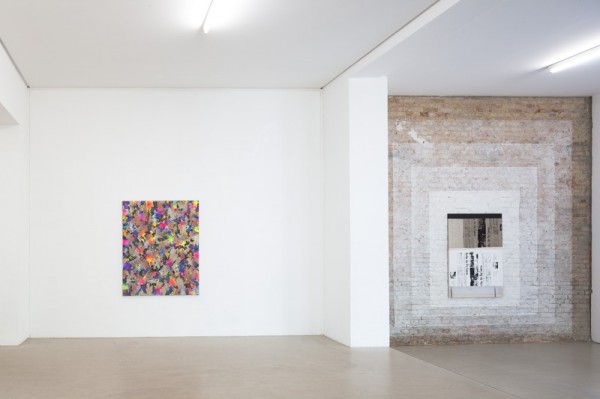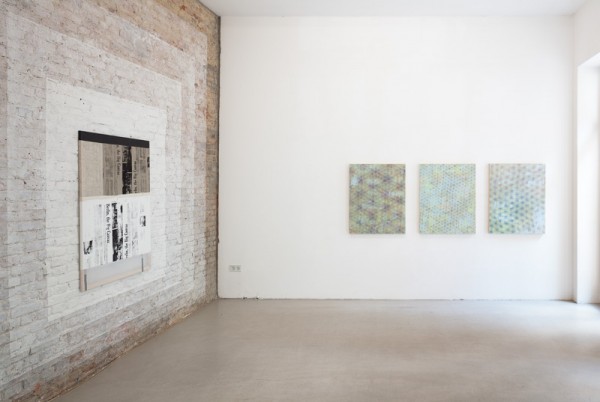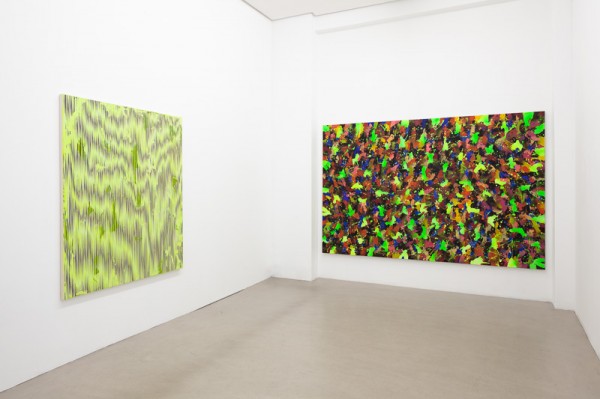Der Grund ist nicht Licht, sondern Nacht
Thursday, 8 May 2014
Der Grund ist nicht Licht, sondern Nacht at Christian Ehretraut.
“ Through their surfaces, structures and the ways in which they are assembled, the works in the exhibition move in direct relation to the surrounding exhibition space and installed artwork. In their use of optical irritations, often intense color and repetitive rhythm, they oscillate between playful sensuality and analytical concept. The title of the exhibition comes from the diaries of Paul Klee, who in 1908 was beginning to build up his works on a black ground (rather than white), remarking that darkness was the “natural state” of things, and light was that which made it visible.
Julie Oppermann’s work pushes the limits of visual perception, making paintings that are physically difficult to perceive. The scintillating effects arising through the calculated layering and juxtaposition of contrasting colors through repetitive line patterns elicit shuttering afterimages, optical flicker, and disorienting sensations of movement. The paintings, on one hand, reference the digital, looking as if they might be computer-generated, vector-based interference patterns; up close, however, they reveal a gestural, intuitive approach. Glitches, bleeds and mis-registrations rupture the illusory field of the moiré, creating visual noise and also highlight the basic tools at work: taped-off line patterns and paint on canvas.
Yorgos Stamkopoulos’ paintings are composed from a variety of multi-layered, flashy, minimalist color fields. Once a layer has been applied with the air-brush, it is masked in a gestural act with countless drippings in a “Pollock-style” manner only to be painted over again. Stamkopoulos repeats this process over and over until the canvas is fully covered; only then are the layers of masking removed to reveal the final image. Similarly to Oppermann, Stamkopoulos builds up layer upon layer, but relinquishes the final control over the painting, leaving room for the unconscious, the unplanned and the random.
Alexander Wolff’s works from the past six years are assembled from different fabrics, printed on, dyed and sewn together. Individual parts of an image are repeated, rotated and mirrored, combining print- and painterly techniques. Wolff continuously questions the possibilities of painting in general, of the image and of representation. He integrates found materials, paint, light and photography as well as the exhibition space itself: A large installation on the gallery’s brick wall is staged both as an autonomous image as well as the backdrop for the whole exhibition.” – Christian Ehretraut



